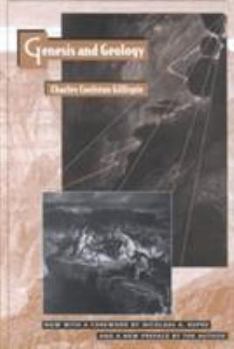Genesis and Geology: A Study of the Relations of Scientific Thought, Natural Theology, and Social Opinion in Great Britain, 1790-1850, with
Select Format
Select Condition 
Book Overview
First published in 1951, Genesis and Geology describes the background of social and theological ideas and the progress of scientific researches that, between them, produced the religious difficulties that afflicted the development of science in early industrial England. The book makes clear that the furor over On the Origin of Species was nothing new: earlier discoveries in science, particularly geology, had presented major challenges,...
Format:Paperback
Language:English
ISBN:0674344812
ISBN13:9780674344815
Release Date:September 1996
Publisher:Harvard University Press
Length:351 Pages
Weight:0.90 lbs.
Dimensions:0.8" x 5.5" x 8.3"
Customer Reviews
1 rating
SCIENCE AND RELIGION - 18th and 19th CENTURY STYLE
Published by Thriftbooks.com User , 14 years ago
For those of us who are very much interested in the interaction between science and religion, Gillispie's 1951 book is a very useful, and thorough summary of the subject. Gillispie points out that the supposed "conflict" or "warfare" between science and theology (as espoused in books such as in Draper's History of the Conflict Between Religion and Science and White's A History of the Warfare of Science With Theology in Christendom 2 Volume Set(Great Minds Series)) didn't necessarily exist prior to 1850; at least, it was not the "simple, universal, black-and-white affair" that Draper and White would make it out to be. In fact, many or most of the prominent scientists in the 17th, 18th, and 19th centuries (e.g., Boyle, Newton) were deeply committed Christians, who believed in the literal accuracy of the Book of Genesis's account of the origins of the world. For these 'natural philosophers,' the physical world was a second revelation, or "God's book of Nature." However, this idyllic picture encountered problems when more came to be known about Geology, and the existence of fossils (notably dinosaurs); James Hutton's book Theory Of The Earth (1788)---as interpreted by John Playfair's Illustrations of the Huttonian Theory of the Earth---was a major step forward, and the geological world became divided into "Neptunists" (who believed that the worldwide flood of Noah had deposited all of the fossils, sediments and strata that geologists were studying) and "Vulcanists" (who believed that volcanic and still-operating forces created features such as mountains). A school of geology called "Catastrophism" developed, which similarly accounted for geological data by Noah's Flood. Cuvier's researches into comparative anatomy were a great step forward, but he put them to the use of catastrophism, arguing that the worldwide flood accounted for such massive extinction. Charles Lyell's book Principles of Geology (Penguin Classics) began to turn the tide in favor of "Uniformitarianism" (i.e., that present processes explained the geological strata, etc.), and Robert Chambers' Vestiges of the Natural History of Creation and Other Evolutionary Writings suggested a pre-Darwinian theory of development between species. The 1859 publication of Darwin's The Origin Of Species: 150th Anniversary Edition turned the tide in favor of the new evolutionary theory, and the modern period of conflict between science and religion began in earnest. Gillispie's book is a fascinating (though sometimes perhaps too detailed) tour through the "details" of this history, and turns persons such as Cuvier into real persons, not caricactures as they are often portrayed in textbooks.




